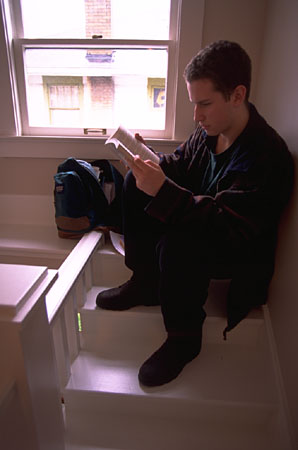Most of us would agree that the schools want what's best for our kids. We need to remember, however, that some people's opinion of "what's best" may differ from our own.
Different organizations often provide and/or endorse sex educations materials that many parents would consider obscene. These may include graphic depictions of sex acts, in-class demonstrations of condom use, and homework assignments that involve visiting abortion clinics.
If parents don't get involved, it's possible that they could lose the right to decide what materials their children will see. If you're concerned - as you should be - talk to your educators and administrators and preview all sexuality materials. Sex education comes in various forms and is included in a variety of lessons. Speakers, videos, and materials may be presented in a school assembly or in individual classes such as health, home economics, science, or human relations. Be alert.
Typically, schools will attempt to notify parents of questionable material through take-home notices. If you have kids, you are already aware that this is not the most reliable form of communication. Papers can easily be misplaced or altered. And while you may think that removing your child from the controversial presentations will protect them, there are three problems with this: 1. While children are not supposed to be penalized fro being removed from an activity, kids who participate are often given extra credit, 2. Kids that are removed may be teased or tormented by peers, and 3. Your child is still associating with (and possibly dating) kids who are being taught the things that you don't agree with.
You have the legal right to know that your child is being taught. Call your local school board and ask to see their course of study for health education. Make sure it complies with HB189 [this in an Ohio House Bill; your state may have the same or a similar bill]. But remember, sex education can also creep under the guise of human development, disease prevention, family life, and hygiene.
Effective date March 18, 1999
This bill requires that venereal disease education emphasize abstinence from sexual activity as the only 100% effective protection against unwanted pregnancy and transmission of the AIDS virus and other sexually transmitted diseases.
It also mandates that the State Board of Education require
course materials and instruction in venereal disease education to cover
certain topics pertaining to abstinence and sexual activity outside of
marriage. The bill requires the State Board of Educationís minimum
standards to include course materials which teach that:
- Students should abstain from sexual activity until after marriage.
- There are potential physical, psychological, emotional, and social side effects of participating in sexual activity outside of marriage.
- Conceiving children out-of-wedlock is likely to have harmful consequences for the child, the parents and society.
- Sexually transmitted diseases are serious possible hazards of sexual activity.
- There are laws pertaining to the financial responsibility of parents to their children who are born out-of-wedlock.
- According to Ohio law, It is illegal under certain circumstances to have sexual contact with a person under the age of 16.

Why Schools Implement True Abstinence Education
1. Desire higher standard
2. Legal, fail-safe message, can avoid future lawsuits
3. Does not discriminate -- all students receive the same information and high standards
4. Comprehensive approach that considers the whole child- physical, emotional, social, and spiritual
5. Offers a new goal of self-control
6. Effective and has strong family focus
7. Provides honest information about the limitations and failure rates of contraceptives
8. Is in alignment with the school's drug, alcohol, and smoking approach
9. The cutting edge in sex education
10. Promotes a partnership between parent, teacher, and student
11. Wants a positive approach that draws on students' strengths, not their weakness